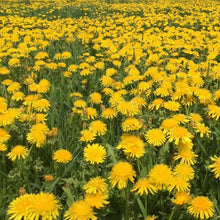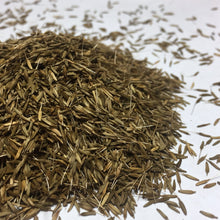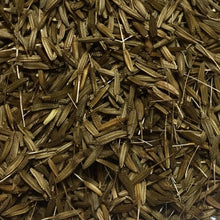Dandelion is perhaps the most well-known ‘weed’ throughout North America and Europe— one of the first plants to venture into the world as snow thaws, dandelions are incredibly hardy. Some find them a nuisance to the garden, but their status as a medicinal and edible powerhouse alongside their tenacity and brightness, make them a beloved plant-being to many. Their widespread habit is a product of their ability to thrive in degraded and human-disturbed soils, an impressive feat that deserves celebration. The bright yellow puffs that blossom from their toothed rosettes are a source of hope and color when the world is still gray. In addition to that, they provide an abundance of nectar that can nourish bees when the plants available are still scarce. There are various common names for this plant, the French name from which ‘Dandelion’ was adapted being ‘Dent de Lion’: Teeth of the Lion, likely for its jagged leaves. Other whimsical names include the Chinese term ‘Earth Nail,’ for their sturdy taproots, and the French/British ‘Piss-in-the-Beds,’ a term nestled in fable but potentially referring to their diuretic properties.
All of the parts of Dandelion are edible, albeit quite bitter (especially in their more mature stages). The young leaves are a nutritious green, one of the early fresh edibles of the springtime, and their blossoms make for lovely fritters or wine. If one has a palette suited towards bitterness, they may enjoy the roasted root; the root can also be dried, roasted, and ground to create a coffee substitute. Their inulin-rich roots are also the source of their digestive tendency, and their perseverance— dandelions are perennial, and they develop strong rhizomal systems that allow them to resprout readily, even if all but part of the root is left in the soil. The most common application of these sunny beauties is for gastrointestinal relief. All parts of the plant secret a milky, bitter juice. Arabian physicians of the tenth and eleventh centuries recorded one of the first written descriptions of Dandelion, and the Welsh not long after. Various Native American tribal groups have utilized this plant for teas, poultices, and as a vegetable.
The fluffy seed heads of Dandelions are a favorite of children, blowing all of the fine wind-dispersed seeds off in hopes of making a wish upon them. This plant is an adaptor, fitting itself to whatever the existing circumstances are, and providing sustenance to the surrounding ecosystem. Much folklore accompanies Taraxacum officinale, with connotations to love, wealth, and transformation.






